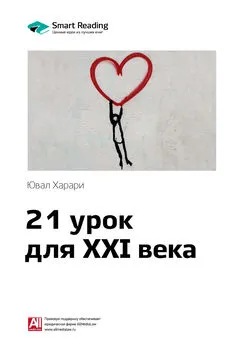Юваль Ной Харари - 21 урок для XXI века [Версия с комментированными отличиями перевода]
- Название:21 урок для XXI века [Версия с комментированными отличиями перевода]
- Автор:
- Жанр:
- Издательство:неизвестно
- Год:2019
- ISBN:нет данных
- Рейтинг:
- Избранное:Добавить в избранное
-
Отзывы:
-
Ваша оценка:
Юваль Ной Харари - 21 урок для XXI века [Версия с комментированными отличиями перевода] краткое содержание
Издательство «Синдбад» внесло существенные изменения в содержание перевода, в основном, в тех местах, где упомянуты Россия, Украина и Путин. Хотя это было сделано с разрешения автора, сравнение версий представляется интересным как для прояснения позиции автора, так и для ознакомления с политикой некоторых современных российских издательств.
Данная версии файла дополнена комментариями с исходным текстом найденных отличий (возможно, не всех). Также, в двух местах были добавлены варианты перевода от
. Для удобства поиска, а также большего соответствия теме книги, добавленные комментарии отмечены словом «post-truth».
«Моя главная задача — сделать так, чтобы содержащиеся в этой книге идеи об угрозе диктатуры, экстремизма и нетерпимости достигли широкой и разнообразной аудитории. Это касается в том числе аудитории, которая живет в недемократических режимах. Некоторые примеры в книге могут оттолкнуть этих читателей или вызвать цензуру. В связи с этим я иногда разрешаю менять некоторые острые примеры, но никогда не меняю ключевые тезисы в книге»
21 урок для XXI века [Версия с комментированными отличиями перевода] - читать онлайн бесплатно ознакомительный отрывок
Интервал:
Закладка:
13
Seyed Azimi et al., ‘Vehicular Networks for Collision Avoidance at Intersections,’ SAE International Journal of Passenger Cars – Mechanical Systems 4 (2011), 406–416; Swarun Kumar et al., ‘CarSpeak: A Content-Centric Network for Autonomous Driving’, SIGCOM Computer Communication Review 42(2012), 259–270; Mihail L. Sichitiu and Maria Kihl, ‘Inter-Vehicle Communication Systems: A Survey’, IEEE Communications Surveys & Tutorials (2008), 10; Mario Gerla, Eun-Kyu Lee and Giovanni Pau, ‘Internet of Vehicles: From Intelligent Grid to Autonomous Cars and Vehicular Clouds’, 2014 IEEE World Forum on Internet of Things (WF-IoT) (2014), 241–246.
14
David D. Luxton et al., ‘mHealth for Mental Health: Integrating Smartphone Technology in Behavioural Healthcare’, Professional Psychology: Research and Practice 42:6 (2011), 505–512; Abu Saleh Mohammad Mosa, Illhoi Yoo and Lincoln Sheets, ‘A Systematic Review of Healthcare Application for Smartphones’, BMC Medical Informatics and Decision Making 12:1 (2012), 67; Karl Frederick Braekkan Payne, Heather Wharrad and Kim Watts, ‘Smartphone and Medical Related App Use among Medical Students and Junior Doctors in the United Kingdom (UK): A Regional Survey’, BMC Medical Informatics and Decision Making 12:1 (2012), 121; Sandeep Kumar Vashist, E. Marion Schneider and John H. T. Loung, ‘Commercial Smartphone-Based Devices and Smart Applications for Personalised Healthcare Monitoring and Management’, Diagnostics 4:3 (2014), 104–128; Maged N. Kamel Bouls et al., ‘How Smartphones Are Changing the Face of Mobile and Participatory Healthcare: An Overview, with Example from eCAALYX’, BioMedical Engineering OnLine 10:24 (2011), https://doi.org/10.1186/1475-925X-10-24, accessed 30 July 2017; Paul J. F. White, Blake W. Podaima and Marcia R. Friesen, ‘Algorithms for Smartphone and Tablet Image Analysis for Healthcare Applications’, IEEE Access 2 (2014), 831–840.
15
World Health Organization, Global status report on road safety 2015 (2016); ‘Estimates for 2000–2015, Cause-Specific Mortality’, http://www.who.int/healthinfo/global_burden_disease/estimates/en/index1.html, accessed 6 September 2017.
16
Анализ причин автомобильных аварий в США см.: Daniel J. Fagnant and Kara Kockelman, ‘Preparing a Nation for Autonomous Vehicles: Opportunities, Barriers and Policy Recommendations’, Transportation Research Part A: Policy and Practice 77 (2015), 167–181; анализ данных по всему миру см., например: OECD/ITF, Road Safety Annual Report 2016 (Paris: OECD Publishing, 2016), http://dx.doi.org/10.1787/irtad-2016-en.
17
Kristofer D. Kusano and Hampton C. Gabler, ‘Safety Benefits of Forward Collision Warning, Brake Assist, and Autonomous Braking Systems in Rear-End Collisions’, IEEE Transactions on Intelligent Transportation Systems 13:4 (2012), 1546–1555; James M. Anderson et al., Autonomous Vehicle Technology: A Guide for Policymakers (Santa Monica: RAND Corporation, 2014), esp. 13–15; Daniel J. Fagnant and Kara Kockelman, ‘Preparing a Nation for Autonomous Vehicles: Opportunities, Barriers and Policy Recommendations’, Transportation Research Part A: Policy and Practice 77 (2015), 167–181; Jean-Francois Bonnefon, Azim Shariff and Iyad Rahwan, ‘Autonomous Vehicles Need Experimental Ethics: Are We Ready for Utilitarian Cars?’, arXiv (2015), 1–15. О предложениях по созданию межтранспортных сетей для предотвращения аварий см.: Seyed R. Azimi et al., ‘Vehicular Networks for Collision Avoidance at Intersections’, SAE International Journal of Passenger Cars – Mechanical Systems 4:1 (2011), 406–416; Swarun Kumar et al., ‘CarSpeak: A Content-Centric Network for Autonomous Driving’, SIGCOM Computer Communication Review 42:4 (2012), 259–270; Mihail L. Sichitiu and Maria Kihl, ‘Inter-Vehicle Communication Systems: A Survey’, IEEE Communications Surveys & Tutorials 10:2 (2008); Mario Gerla et al., ‘Internet of Vehicles: From Intelligent Grid to Autonomous Cars and Vehicular Clouds’, 2014 IEEE World Forum on Internet of Things (WF-IoT) (2014), 241–246.
18
Michael Chui, James Manyika and Mehdi Miremadi, ‘Where Machines Could Replace Humans – and Where They Can’t (Yet)’, McKinsey Quarterly (2016), http://www.mckinsey.com/business-functions/digital-mckinsey/our-insights/where-machines-could-replace-humans-and-where-they-cant-yet, accessed 1 March 2018.
19
Wu Youyou, Michal Kosinski and David Stillwell, ‘Computer-based personality judgments are more accurate than those made by humans’, PANS, vol. 112 (2014), 1036–1038.
20
Stuart Dredge, ‘AI and music: will we be slaves to the algorithm?’ Guardian, 6 August 2017, https://www.theguardian.com/technology/2017/aug/06/artificial-intelligence-and-will-we-be-slaves-to-the-algorithm, accessed 15 October 2017. Обзорный анализ методов см.: Jose David Fernández and Francisco Vico, ‘AI Methods in Algorithmic Composition: A Comprehensive Survey’, Journal of Artificial Intelligence Research 48 (2013), 513–582.
21
Eric Topol, The Patient Will See You Now: The Future of Medicine is in Your Hands (New York: Basic Books, 2015); Robert Wachter, The Digital Doctor: Hope, Hype and Harm at the Dawn of Medicine’s Computer Age (New York: McGraw-Hill Education, 2015); Simon Parkin, ‘The Artificially Intelligent Doctor Will Hear You Now’, MIT Technology Review (2016), https://www.technologyreview.com/s/600868/the-artificially-intelligent-doctor-will-hear-you-now/; James Gallagher, ‘Artificial intelligence “as good as cancer doctors”, BBC, 26 January 2017, http://www.bbc.com/news/health-38717928.
22
Kate Brannen, ‘Air Force’s lack of drone pilots reaching “crisis” levels’, Foreign Policy, 15 January 2015, http://foreignpolicy.com/2015/01/15/air-forces-lack-of-drone-pilots-reaching-crisis-levels/.
23
Tyler Cowen, Average is Over: Powering America Beyond the Age of the Great Stagnation (New York: Dutton, 2013); Brad Bush, ‘How combined human and computer intelligence will redefine jobs’, TechCrunch (2016), https://techcrunch.com/2016/11/01/how-combined-human-and-computer-intelligence-will-redefine-jobs/.
24
Ulrich Raulff, Farewell to the Horse: The Final Century of Our Relationship (London: Allen Lane, 2017); Gregory Clark, A Farewell to Alms: A Brief Economic History of the World (Princeton: Princeton University Press, 2008), 286; Margo DeMello, Animals and Society: An Introduction to Human-Animal Studies (New York: Columbia University Press, 2012), 197; Clay McShane and Joel Tarr, ‘The Decline of the Urban Horse in American Cities’, Journal of Transport History 24:2 (2003), 177–198.
25
Lawrence F. Katz and Alan B. Krueger, ‘The Rise and Nature of Alternative Work Arrangements in the United States, 1995–2015’, National Bureau of Economic Research (2016); Peter H. Cappelli and J. R. Keller, ‘A Study of the Extent and Potential Causes of Alternative Employment Arrangements’, ILR Review 66:4 (2013), 874–901; Gretchen M. Spreitzer, Lindsey Cameron and Lyndon Garrett, ‘Alternative Work Arrangements: Two Images of the New World of Work’, Annual Review of Organizational Psychology and Organizational Behavior 4 (2017), 473–499; Sarah A. Donovan, David H. Bradley and Jon O. Shimabukuru, ‘What Does the Gig Economy Mean for Workers?’, Washington DC: Congressional Research Service (2016), https://fas.org/sgp/crs/misc/R44365.pdf, accessed 11 February 2018; ‘More Workers Are in Alternative Employment Arrangements’, Pew Research Center, 28 September 2016, http://www.pewsocialtrends.org/2016/10/06/the-state-of-american-jobs/st_2016-10-06_jobs-26/, accessed 11 February 2018.
26
David Ferrucci et al.,‘Watson: Beyond Jeopardy!’, Artificial Intelligence 19–200 (2013), 93–105.
27
‘Google’s AlphaZero Destroys Stockfish in 100-Game Match’, Chess.com, 6 December 2017, https://www.chess.com/news/view/google-s-alphazero-destroys-stockfish-in-100-game-match, accessed 11 February 2018; David Silver et al., ‘Mastering Chess and Shogi by Self-Play with a General Reinforcement Learning Algorithm’, arXiv (2017), https://arxiv.org/pdf/1712.01815.pdf, accessed 2 February 2018; see also Sarah Knapton, ‘Entire Human Chess Knowledge Learned and Surpassed by DeepMind’s AlphaZero in Four Hours’, Telegraph, 6 December 2017, http://www.telegraph.co.uk/science/2017/12/06/entire-human-chess-knowledge-learned-surpassed-deepminds-alphazero/, accessed 11 February 2018.
28
Cowen, Average is Over, op. cit.; Tyler Cowen, ‘What are humans still good for? The turning point in freestyle chess may be approaching’ (2013), http://marginalrevolution.com/marginalrevolution/2013/11/what-are-humans-still-good-for-the-turning-point-in-freestyle-chess-may-be-approaching.html.
29
Maddalaine Ansell, ‘Jobs for Life Are a Thing of the Past. Bring On Lifelong Learning’, Guardian, 31 May 2016, https://www.theguardian.com/higher-education-network/2016/may/31/jobs-for-life-are-a-thing-of-the-past-bring-on-lifelong-learning.
30
Alex Williams, ‘Prozac Nation Is Now the United States of Xanax’, New York Times, 10 June 2017, https://www.nytimes.com/2017/06/10/style/anxiety-is-the-new-depression-xanax.html.
31
Simon Rippon, ‘Imposing Options on People in Poverty: The Harm of a Live Donor Organ Market’, Journal of Medical Ethics 40 (2014), 145–150; I. Glenn Cohen, ‘Regulating the Organ Market: Normative Foundations for Market Regulation’, Law and Contemporary Problems 77 (2014); Alexandra K. Glazier, ‘The Principles of Gift Law and the Regulation of Organ Donation’, Transplant International 24 (2011), 368–372; Megan McAndrews and Walter E. Block, ‘Legalizing Saving Lives: A Proposition for the Organ Market’, Insights to A Changing World Journal 2015, 1–17.
32
James J. Hughes, ‘A Strategic Opening for a Basic Income Guarantee in the Global Crisis Being Created by AI, Robots, Desktop Manufacturing and BioMedicine’, Journal of Evolution & Technology 24 (2014), 45–61; Alan Cottey, ‘Technologies, Culture, Work, Basic Income and Maximum Income’, AI & Society 29 (2014), 249–257.
33
Jon Henley, ‘Finland Trials Basic Income for Unemployed,’ Guardian, 3 January 2017, https://www.theguardian.com/world/2017/jan/03/finland-trials-basic-income-for-unemployed, accessed 1 March 2018.
34
‘Swiss Voters Reject Proposal to Give Basic Income to Every Adult and Child’, Guardian, 5 June 2017, https://www.theguardian.com/world/2016/jun/05/swiss-vote-give-basic-income-every-adult-child-marxist-dream.
35
Isabel Hunter, ‘Crammed into squalid factories to produce clothes for the West on just 20p a day, the children forced to work in horrific unregulated workshops of Bangladesh’, Daily Mail, 1 December 2015, http://www.dailymail.co.uk/news/article-3339578/Crammed-squalid-factories-produce-clothes-West-just-20p-day-children-forced-work-horrific-unregulated-workshops-Bangladesh.html, accessed 15 October 2017; Chris Walker and Morgan Hartley, ‘The Culture Shock of India’s Call Centers’, Forbes, 16 December 2012, https://www.forbes.com/sites/morganhartley/2012/12/16/the-culture-shock-of-indias-call-centres/#17bb61d372f5, accessed 15 October 2017.
Читать дальшеИнтервал:
Закладка:
![Обложка книги Юваль Ной Харари - 21 урок для XXI века [Версия с комментированными отличиями перевода]](/books/1080711/yuval-noj-harari-21-urok-dlya-xxi-veka-versiya-s-ko.webp)

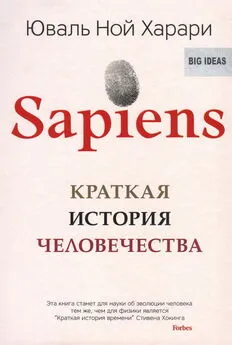
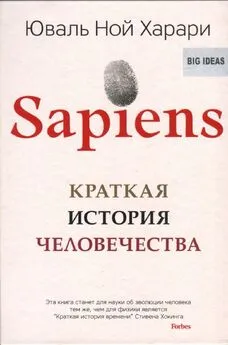
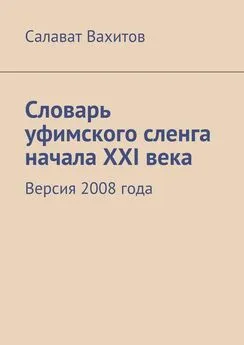
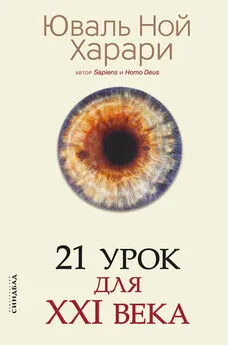
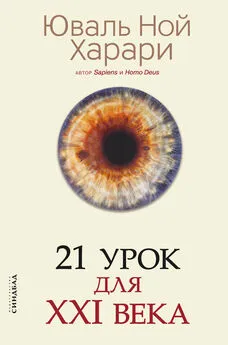
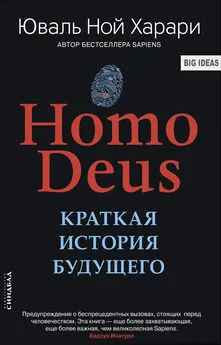
![Юваль Ной Харари - Sapiens. Краткая история человечества [litres]](/books/1102059/yuval-noj-harari-sapiens-kratkaya-istoriya-cheloveche.webp)

